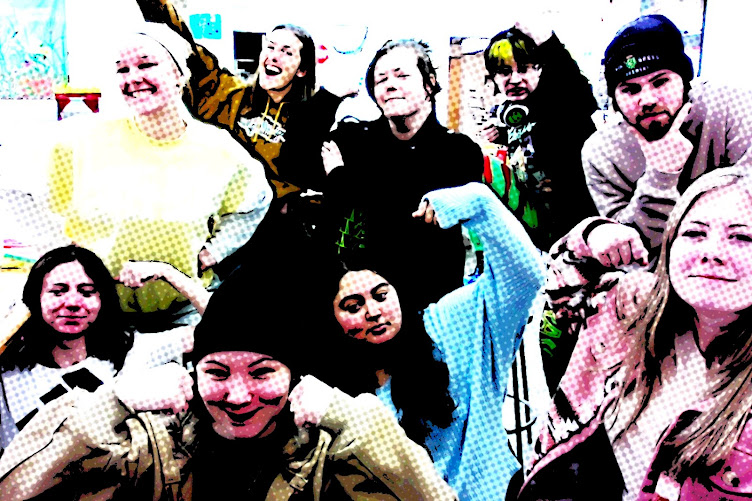Hello all, we hope you enjoyed
reading chapter 8 as much as we did! There were several large themes imbedded
in just a few short pages that we would like to expand on. First, however, we
would like to present some of what we believe to be the most influential points
in this chapter. Let’s begin with defining service learning.
“Service learning is
a teaching and learning strategy that integrates meaningful community service
with instruction and reflection to enrich the learning experience, teach civic
responsibility, and strengthen communities” (Office of Civic Engagement &
Service Learning)
Service learning is great because
it is creating projects that help the community and remind the students of
their experiences in helping one another through fundraiser or community
activities. Here is a website we found that presents standards for service
learning to keep these projects relevant to your curriculum: (http://nylc.org/standards/).
Here are two great organizations that the chapter mentions:
Empty
Bowls (EB) is a fundraising project focused on providing dinnerware for local
food banks. They hold events where people come and eat soup to support the
local food shelter and get to leave with a bowl they had eaten from. This helps
keep the owner aware of the empty bowls in their area, or even the world. Empty
Bowls has expanded to being used in auctions, and can even be purchased for
holiday packages with the proceeds helping the hungry people in their
community. The EB is even affiliated with the National Service Learning
conference. At this conference, ninety percent of the people who participated
in EB bought their own to be reminded of their experiences in helping the
community.
Second
is Potters for Peace (PFP) which was set in motion due to the need for
awareness toward a silent crisis. If you read the chapter you would know that
every fifteen seconds a child dies from water-related disease (Water Partners
International, 2008). PFP aims to help those in need of viable water by
supplying low-cost ceramic water filters. These water filters the PFP creates
remove 99.88% of most water-borne diseases. PFP began to make filters with many
non-governmental organizations and health organizations.
These
organizations, like many others, prove that artistic forms can be useful in
community based art education for social justice. Clay and ceramics is a very
versatile medium that can be used to make artistic, functional, and meaningful
differences in our communities.
Hunger and thirst is a prominent
theme in this chapter. Satisfying hunger and thirst are basic necessities for
our survival, yet so many people go without these things. The chapter shares
that we need to make our service learning lessons relate to where people are located
and that students can connect more deeply with their artmaking through these
experiences. The need to help satisfy those with hunger is everywhere you look,
and events such as the Flint water crisis bring the need for clean water close
to home.
Resources
EBP website: http://www.emptybowls.net/
PFP website: http://www.pottersforpeace.org/
PFP video: https://www.youtube.com/watch?v=ZDWTfVpii-8
Maslow’s Hierarchy of Needs: http://www.simplypsychology.org/maslow.html
Now that we have
reviewed chapter 8, we ask that you answer these next few questions in your
blog.
1.
Three of the most important things that are
necessary for our survival according to Maslow are food, water, and shelter.
The chapter discusses how art can fulfill the needs of food and water. In your
classroom, how can you fulfil the need for shelter? Discuss your lesson idea
and find an artist or group that uses art as a way to help people meet the need
of shelter.
2.
What other levels of Maslow’s Hierarchy can we
help satisfy through service learning projects in the art classroom? How? Pick
one of the following and discuss your idea. (Physiological, safety, love,
esteem, self-actualization)
3.
How can you adapt a high school class curriculum
to incorporate service learning into one of your courses to help students to be
inspired to use art as a tool for social justice? (E.g. Adding EBP or PFP to
your ceramics curriculum.) Please use
the k-12 Service Learning Standards as a guide to designing your service
learning plan for your curriculum. There are 8 standards, your project should
meet one area from each of the standards. Website: http://nylc.org/standards/
Make sure to post artists’
images and links you might use to connect your curriculum to help students see
the importance of service learning in their artmaking.
Love, Garrett and Marvea


No comments:
Post a Comment